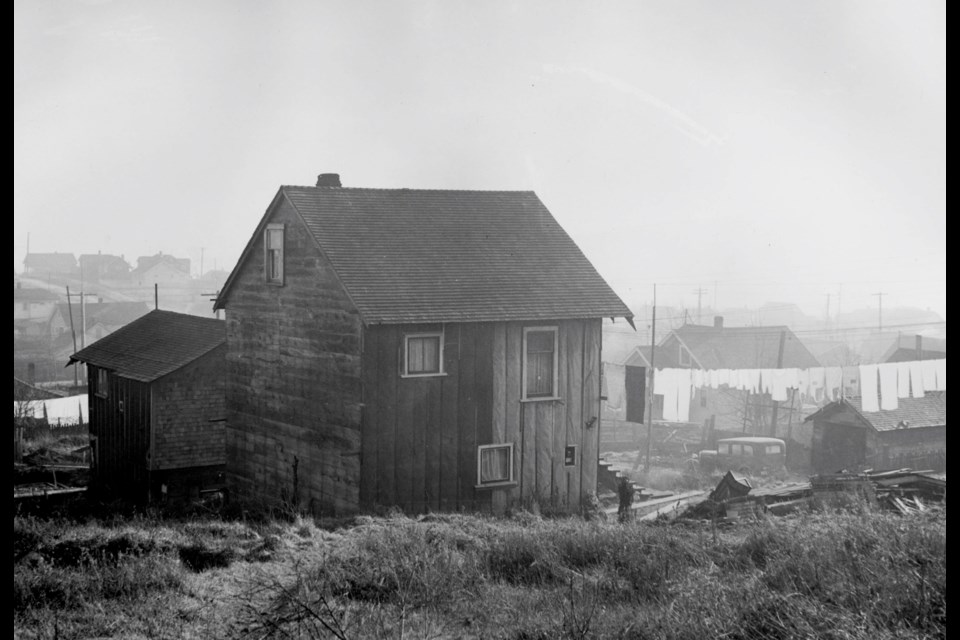While Vancouver's ritziest neighbourhoods and commercial districts show up in plenty of photos, historic pictures of the less affluent areas of the city are less typical.
However, some photos do exist in the City of Â鶹´«Ã½Ó³»Archives. Mostly from the 1940s, these photos show what were considered "slums" at the time (there are a few photos taken sometime between 1960 and 1980 as well). It is important to note that the term "slum" was used at the time by the people who created the photo, not the current city archivists.
The term "slum" broadly means an area where there are lots of poorly built residential units, be they shacks or something larger. A report from developers to the city even used the term in a plan to address housing issues due to a lack of affordable homes in the 1940s.
"An acute housing shortage faces Â鶹´«Ã½Ó³»in 1942," noted the report.
Consequently, the plan's first goal was to "remove slum conditions."
Photos from 1947 by an advertising agency depict an area near the Granville Street Bridge (it's unclear which end) showing a neighbourhood deemed to be "slums" by someone involved. The photos show small wooden buildings often with substantial amounts of unused wood outside.
Notes with the photos also point to bad roads and potholes as being a part of the slums.
Other photos show the 300 block of East Cordova, which is now part of the Downtown Eastside. One photo description notes the area is "the slum district of Vancouver."
While the DTES is still associated with poor living conditions, the buildings pictured are quite different, with short wooden structures, including wooden walkways (which were often used in Vancouver's early days as dirt paths often got muddy and difficult to use).
"Garbage and garbage containers at the slums in the 300 block East Cordova," states the notes with one photo which shows what appears to be an alley with garbage cans and cardboard boxes pilled nearby.
The last couple of photos were taken sometime between 1960 and 1980 by the city's planning department, and show roughly built wooden homes in Strathcona, described as "dilapidated."



